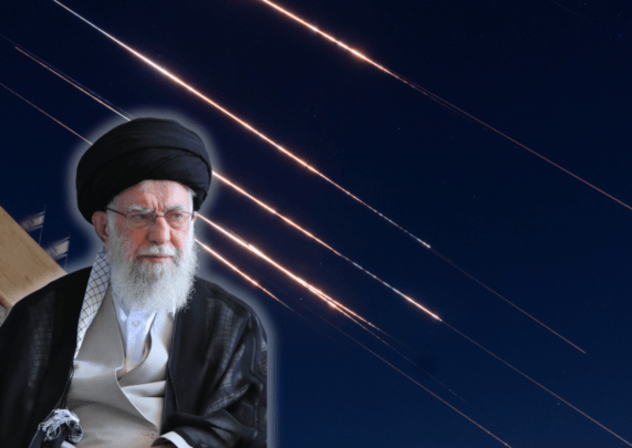Glass Jaws and Atomic Lies: The Public Humiliation of the Iranian Regime

For decades, the world has been forced to endure a tedious and transparent fiction from the Islamic Republic of Iran: the myth of its ‘peaceful’ nuclear program. It was a lie whispered in the gilded halls of Vienna and shouted from podiums at the UN, a flimsy veil for an apocalyptic ambition aimed squarely at the destruction of Israel and the destabilization of the world. Now, that veil has not merely been lifted; it has been shredded by the regime’s own breathtaking incompetence, leaving behind the undeniable truth of its catastrophic strategic collapse.
Let us be clear: the debate is over. The ‘peaceful’ narrative was not debunked by foreign intelligence reports or whispered accusations; it was immolated on a pyre of the regime’s own making. In a grotesque spectacle of self-incrimination, Iranian state media—the Mullahs’ own propaganda arm—broadcast the funerals of its top nuclear scientists alongside the highest echelons of the Islamic Revolutionary Guard Corps (IRGC). Generals Salami and Hajizadeh were mourned as martyrs for the very same cause as the men who worked on centrifuges. The message, broadcast for all Iranians to see, was explicit: the military cause and the nuclear cause are one and the same. This suicidal admission was punctuated by the rubble of the now-destroyed Uranium Metal Conversion Plant, a facility with no purpose in a civilian energy program but which is absolutely essential for creating the explosive core of an atomic bomb. The lie is dead, and Iran itself provided the eulogy.
This exposure of its nuclear deception is matched only by the humiliating exposure of its profound weakness. A regime that projects an image of iron-fisted control has been revealed as a paper fortress, incapable of protecting its own capital, let alone its most senior figures. The spectacle of Ali Shamkhani, a senior aide to the Supreme Leader himself, appearing wounded on state television after his home was destroyed is a devastating symbol of this impotence. The state’s security apparatus is a sieve. This is not conjecture; it is a fact confirmed by Iran’s own judiciary, which was forced to admit that a surgical Israeli strike on the notorious Evin Prison in the heart of Tehran killed 71 people. The message to the world, and more importantly, to the long-suffering Iranian people, is that the emperor has no clothes, no walls, and no ability to safeguard his own inner sanctum.
The regime’s military might, so often the subject of staged parades and bellicose threats, has been proven equally hollow. In a farcical attempt to save face, Iran launched a retaliatory missile strike against the major US Al Udeid base. The result was not a display of power, but of pathetic futility. The missiles were effortlessly swatted from the sky by Qatar’s defense systems. This wasn’t a superpower showdown; it was a regional power casually dismissing a tantrum. Iran’s much-vaunted ability to project force is a myth, its threats empty, and its military a toothless tiger that can only roar at its own citizens.
Cornered and exposed, Tehran looked to its so-called allies, only to find itself utterly alone. The vaunted ‘anti-West’ axis of Russia and China proved to be a fair-weather friendship of convenience. In Iran’s moment of crisis, Beijing and Moscow offered only ‘muted,’ ‘cautious,’ and non-committal statements, carefully distancing themselves from the collapsing regime. This diplomatic abandonment underscores a brutal reality: Iran is not a strategic partner to these powers; it is a disposable pawn, and its value has plummeted.
Yet, the humiliation of the regime does not erase the danger it poses. It amplifies it. We are now facing a severe and immediate proliferation crisis of terrifying proportions. IAEA Director General Rafael Grossi has made the stunning public admission that the international community has no idea where Iran’s large stockpile of 60% enriched uranium is located. This material, a few technical steps from weapons-grade, is unaccounted for and outside of any supervision. The potential for this material to be sold, moved, or unleashed is a global nightmare. Furthermore, Grossi confirms that despite the recent strikes, Iran retains the technical knowledge and capacity to restart its race for a bomb in a ‘matter of months.’ The threat has not been eliminated; it is a wounded, cornered animal, more unpredictable and dangerous than ever.
Faced with total failure on the international stage, the regime does what all failing autocracies do: it turns its rage inward, preying on its own people. A paranoid ‘season of traitor-killing’ is now underway, with Iran’s judiciary confirming the swift execution of citizens accused of spying for Israel. This is the classic playbook of a guilty leadership desperate for scapegoats. Unable to stop foreign strikes and exposed as liars, the Mullahs are now murdering their own people to deflect from their own catastrophic security failures. This is not strength; it is the death rattle of a regime drowning in its own paranoia and incompetence, a regime whose only remaining victim is the Iranian people themselves.